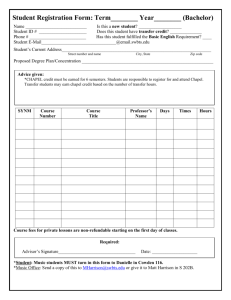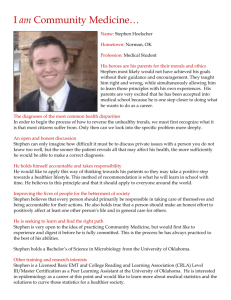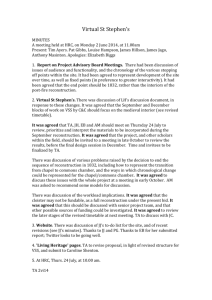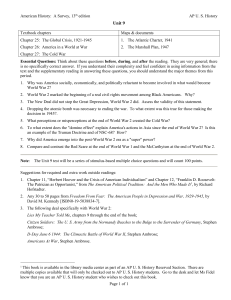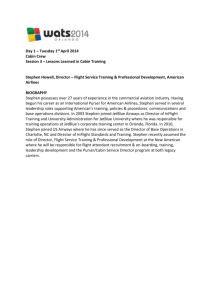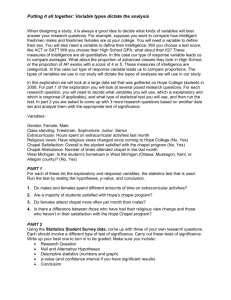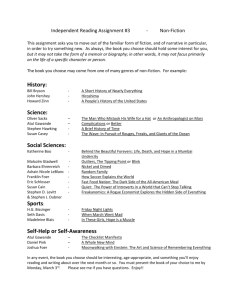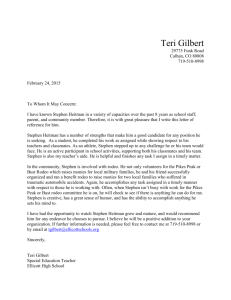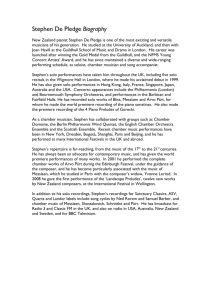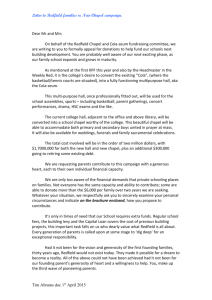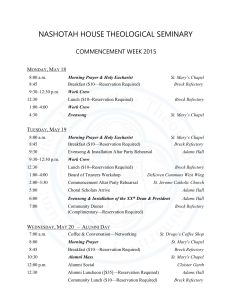Meeting minutes - Virtual St Stephens
advertisement
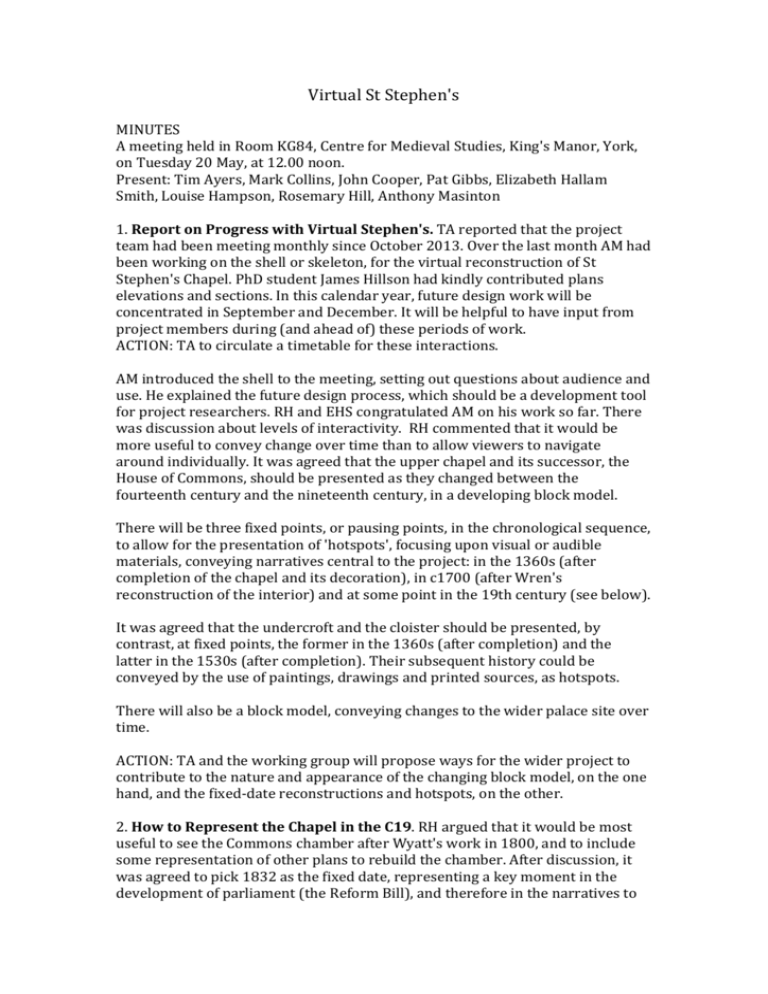
Virtual St Stephen's MINUTES A meeting held in Room KG84, Centre for Medieval Studies, King's Manor, York, on Tuesday 20 May, at 12.00 noon. Present: Tim Ayers, Mark Collins, John Cooper, Pat Gibbs, Elizabeth Hallam Smith, Louise Hampson, Rosemary Hill, Anthony Masinton 1. Report on Progress with Virtual Stephen's. TA reported that the project team had been meeting monthly since October 2013. Over the last month AM had been working on the shell or skeleton, for the virtual reconstruction of St Stephen's Chapel. PhD student James Hillson had kindly contributed plans elevations and sections. In this calendar year, future design work will be concentrated in September and December. It will be helpful to have input from project members during (and ahead of) these periods of work. ACTION: TA to circulate a timetable for these interactions. AM introduced the shell to the meeting, setting out questions about audience and use. He explained the future design process, which should be a development tool for project researchers. RH and EHS congratulated AM on his work so far. There was discussion about levels of interactivity. RH commented that it would be more useful to convey change over time than to allow viewers to navigate around individually. It was agreed that the upper chapel and its successor, the House of Commons, should be presented as they changed between the fourteenth century and the nineteenth century, in a developing block model. There will be three fixed points, or pausing points, in the chronological sequence, to allow for the presentation of 'hotspots', focusing upon visual or audible materials, conveying narratives central to the project: in the 1360s (after completion of the chapel and its decoration), in c1700 (after Wren's reconstruction of the interior) and at some point in the 19th century (see below). It was agreed that the undercroft and the cloister should be presented, by contrast, at fixed points, the former in the 1360s (after completion) and the latter in the 1530s (after completion). Their subsequent history could be conveyed by the use of paintings, drawings and printed sources, as hotspots. There will also be a block model, conveying changes to the wider palace site over time. ACTION: TA and the working group will propose ways for the wider project to contribute to the nature and appearance of the changing block model, on the one hand, and the fixed-date reconstructions and hotspots, on the other. 2. How to Represent the Chapel in the C19. RH argued that it would be most useful to see the Commons chamber after Wyatt's work in 1800, and to include some representation of other plans to rebuild the chamber. After discussion, it was agreed to pick 1832 as the fixed date, representing a key moment in the development of parliament (the Reform Bill), and therefore in the narratives to be conveyed by the project. The virtual reconstruction will therefore focus upon the lost fabric of the upper chapel and Commons chamber. As a result, it was agreed that the interiors of St Stephen's Hall and the undercroft, as reconstructed in Barry's new Houses of Parliament, should not be included in Virtual St Stephen's. The fabric of these, of course, survives substantially. There are already virtual walk-throughs of these spaces on the Palace of Westminster website, to which viewers of Virtual St Stephen's can be directed. ACTION: LH, PG and AM to review workload, timing and costing for the implementation of the changes under items 1 and 2 above, for discussion at the next project meeting. Delivery media will also need to be considered. 3. Living Heritage Pages. MC commented that the medieval college needs to be included within the structure. It will also need to be modified in the light of the decisions taken under items 1 and 2. ACTION: TA to modify the proposal to the Living Heritage working party. TA, 21v14
